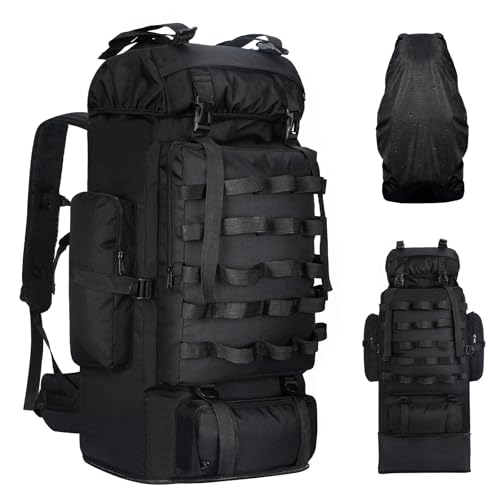Rucksack Size Chart
A rucksack size chart is helpful for selecting the right backpack based on your body size, activity, and intended use. The right fit can make a significant difference in comfort, especially for long hikes, travel, or everyday use. Here’s an explanation of how rucksack sizing works, along with a general size guide.
How Rucksack Size Works
Rucksack size is typically measured in liters and refers to the volume of the pack, indicating how much gear it can hold. However, it’s also important to consider the fit of the rucksack, particularly for hiking or outdoor activities, where comfort is key. The fit is determined by your torso length (the distance from the top of your shoulder blades to your hip bones) and the hip belt size (for securing the rucksack around your waist).
Rucksack Size Chart
| Size | Capacity (Liters) | Torso Length (inches) | Best For | Example Uses |
|---|---|---|---|---|
| Small | 15 – 30 L | Up to 16″ | Day trips | Commuting, short hikes |
| Medium | 30 – 50 L | 16″ – 20″ | Weekend trips | Overnight camping |
| Large | 50 – 70 L | 18″ – 22″ | Multi-day trips | Backpacking |
| Extra Large | 70+ L | 20″ – 24″ | Extended adventures | Expeditions, travel |
How to Find the Right Fit
In addition to volume, fitting a rucksack to your body size is essential for comfort and balance. Here are the two most important elements of fit:
- Torso Length: The torso length is measured from the top of your shoulder blades (C7 vertebrae) down to the top of your hip bones. Most rucksacks come with adjustable straps to accommodate different torso lengths, but knowing your torso length will help you choose the right size rucksack.
- Small (Torso length: 14–16 inches / 35–41 cm)
- Medium (Torso length: 16–19 inches / 41–48 cm)
- Large (Torso length: 19–22 inches / 48–56 cm)
- Hip Belt Size: The hip belt is essential for carrying most of the weight of your rucksack, relieving pressure from your shoulders. To determine your hip belt size, measure around the top of your hips, where the hip belt will sit.
- Small (Hip size: 26–32 inches / 66–81 cm)
- Medium (Hip size: 32–38 inches / 81–97 cm)
- Large (Hip size: 38–44 inches / 97–112 cm)
Fit Adjustments
Once you’ve chosen the right rucksack size, adjust the following for optimal fit and comfort:
- Shoulder Straps: These should fit comfortably across your shoulders without digging in. Adjust them to ensure the weight is transferred to your hips.
- Hip Belt: The belt should rest on your hips (not your waist) and be tightened so it comfortably carries the weight of the pack.
- Load Lifters: Many rucksacks come with load lifters on the shoulder straps. These help pull the weight of the pack away from your back and closer to your body for better balance.
- Sternum Strap: This strap should be adjusted across your chest to help stabilize the load and keep the shoulder straps in place.
Rucksack Volume Recommendations for Different Activities
- Day Trips (15–30 liters): Ideal for short hikes, urban commuting, or daily use. These rucksacks are perfect for carrying just the essentials like water, snacks, a jacket, and a camera or small gear. They’re lightweight and compact, offering enough space for a day’s worth of items.
- Weekend Trips (30–50 liters): Suitable for 1-3 day hikes or travel. These packs offer more room for additional gear like sleeping bags, tents, and cooking equipment. For weekend trips, it’s important to balance volume with weight, as you’ll be carrying the rucksack for extended periods.
- Multi-Day Hiking (50–70 liters): Rucksacks of this size are perfect for longer treks where you need to carry more equipment, including a tent, sleeping bag, cooking gear, and additional layers of clothing. The larger volume allows for carrying all the necessary items without overcrowding.
- Expedition (70+ liters): Expedition-sized rucksacks are designed for extended hiking trips and expeditions. These are ideal for carrying heavy loads over long periods, often including technical gear, food, extra clothing, and other supplies. They’re typically heavier and bulkier, so make sure they’re fitted correctly for your comfort and efficiency.
Conclusion
Choosing the right rucksack size involves considering both the volume and fit. Start by measuring your torso length and hip circumference, then decide on the appropriate volume based on your activity. A good rucksack fit ensures that the weight is distributed efficiently across your body, providing maximum comfort and reducing strain.
Remember, each brand may have slightly different sizing, so always refer to the specific manufacturer’s guide for more accurate measurements.






